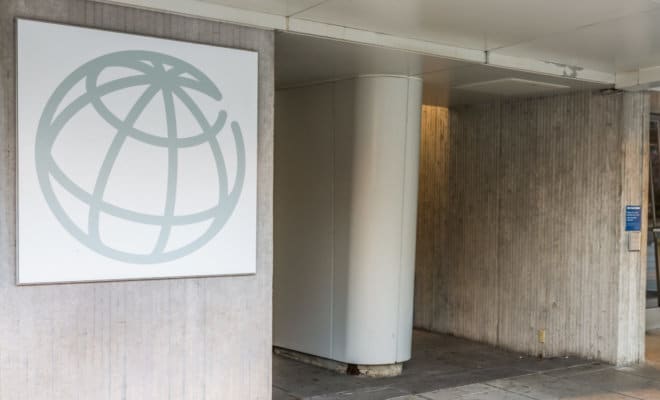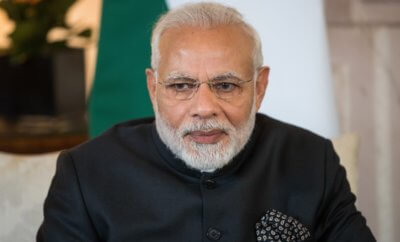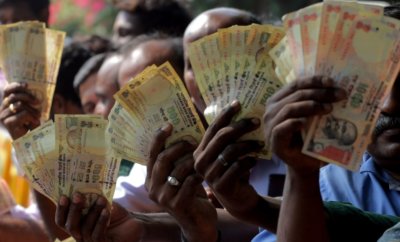Business
India to Regain Fastest Growing Economy Tag, Says World Bank; Projects 7.3% Growth Rate in 2018

World Bank Group logo with entrance to building in Washington
Bigstock
Positive results are expected from India's recent reforms, such as GST, demonetization, and 'Make in India' initiative, the World Bank said.
Compared to other emerging economies, India has “enormous growth potential,” the World Bank said on Jan. 9, mentioning the “ambitious government comprehensive reforms.” The Gross Domestic Product (GDP) growth is expected to rise to 7.3 per cent in 2018-19, and to 7.5 for the next two years.
Despite setbacks from demonetization and Goods and Services Tax (GST), India is estimated to have grown at 6.7 per cent in 2017, according to the 2018 Global Economic Prospect released by the World Bank on Jan. 9.
“In all likelihood India is going to register higher growth rate than other major emerging market economies in the next decade. So, I wouldn’t focus on the short-term numbers. I would look at the big picture for India and big picture is telling us that it has enormous potential,” Ayhan Kose, Director, Development Prospects Group, World Bank, said, PTI reported.
While China is slowing, India is expected to accelerate, according to the report. “The growth numbers of the past three years were very healthy,” Kose, who wrote the report, said.
The World Bank report said that private investment is expected to revive in India “as the corporate sector adjusts to the GST; infrastructure spending increases, partly to improve public services and Internet connectivity; and private sector balance sheet weaknesses are mitigated with the help of the efforts of the government and the Reserve Bank of India.”
The government’s recent recapitalization package for public sector banks could “resolve banking sector balance sheets, support credit to the private sector, and lift investment,” the report added.
The World Bank expected results from India’s recent reforms, including demonetization, and the ‘Make in India’ initiative.
They “are expected to encourage formal sector activity, broaden the tax base, and improve long-term growth prospects despite short term disruptions in the case of demonetization,” it said.
The World Bank estimate is in line with the International Monetary Fund’s (IMF) projection of 6.7 per cent for 2017. The IMF, however, forecast a slightly higher growth estimate of 7.4 per cent for 2018.
Morgan has projected a growth rate of 6.4 for 2017 and 7.5 per cent in 2018. Nomura also estimated this year’s growth to be 7.5 per cent.
Last year, China grew at 6.8 per cent, a growth rate of 0.1 per cent more than that of India. In 2018, its growth rate is projected at 6.4 per cent. In the next two years, China’s growth rate is expected to drop to 6.3 and 6.2 per cent, respectively.
India needs to take steps to boost investment prospects to realize and exceed its potential, Kose pointed out.
“On the productivity side, India has enormous potential with respect to secondary education completion rate. All in all, improved labor market reforms, education and health reforms as well as relaxing investment bottleneck will help improve India’s prospects,” Kose said, the news agency added.
India has protracted balance sheet weaknesses such as corporate debt burdens and non-performing loans in the banking sector, weighing down private investment, the World Bank said.
Kose believes that India’s favorable demographic profile is rarely seen in other countries. “In that context, improving female labor force participation rate is going to be important. Female labor force participation still remains low relative to other emerging market economies. Bringing force right now idle outside of the productive activities will make a huge difference,” he said, adding, “In fact, we expect India to do better than its potential in 2018 and move forward.” For the next 10 years, India’s growth potential would be around 7 per cent.
The big question is whether Indian legislators would push its potential growth. “So far we have seen ambitious policy initiatives and implementation like GST. And we have all the reasons to expect this government to continue economic policies to create friendly environment for businesses and push its growth potential up,” Kose said.
In a ranking of countries based on ease of doing business issued by the World Bank in October 2017, India leapt 30 spots to the 100th rank. — (With IANS inputs)



